Taking a book (project) off the shelf
Sometimes it's a pleasure to reflect on the past. It's even better when an old friend comes to town and the stories can roll out over food, and new experiences. Earl Kallemeyn came from NYC to stay with me for a week. I've known Earl since 1991. We met on a job where I was hired to edit a proposed replacement for Fine Print, I'm sure you're familiar with it, right? Earl was a pressman for the owner, and we bonded pretty quickly over our common interest in the arts of the book. That whole thing was short-lived, however it begat a 32 year friendship, and now, a new collaboration.
Earl was a union Monotype operator in the late 80's, having access to the Alfred Fairbank version of Bembo Italic he typeset the text for Bartleby the Scrivener. He justified the text (no need to justify his decision to print it!) and letterspaced it for a perfect reading experience, then printed it on his Washington hand press in Spanish Harlem. While Christian Swanz did a masterful job of binding a few books, Earl never had time to market them and get them in collections. Only the Newberry Library and New York Public Library purchased them. Earl had to make a living, so he put the printed sheets in a box, and turned his attention to making a living from commercial letterpress jobs in Manhattan.
By the fall of 1991, Earl was living in Manhattan, scraping by on food-kitchen meals, saving every cent he could, and building a clientele that would afford him a better existence. It would take a little while, but he's managed to stretch it out for 3 decades, providing exceptional printing skills to his clients. Recently, he's allowed himself to slow down enough to move this project forward.
Earl arrived bright and early on Monday, January 9, 2023. We drove from SFO to Hayward, and were fully immersed in talk about printing, books, paper, bookbinding, old friends, and some of our escapades.
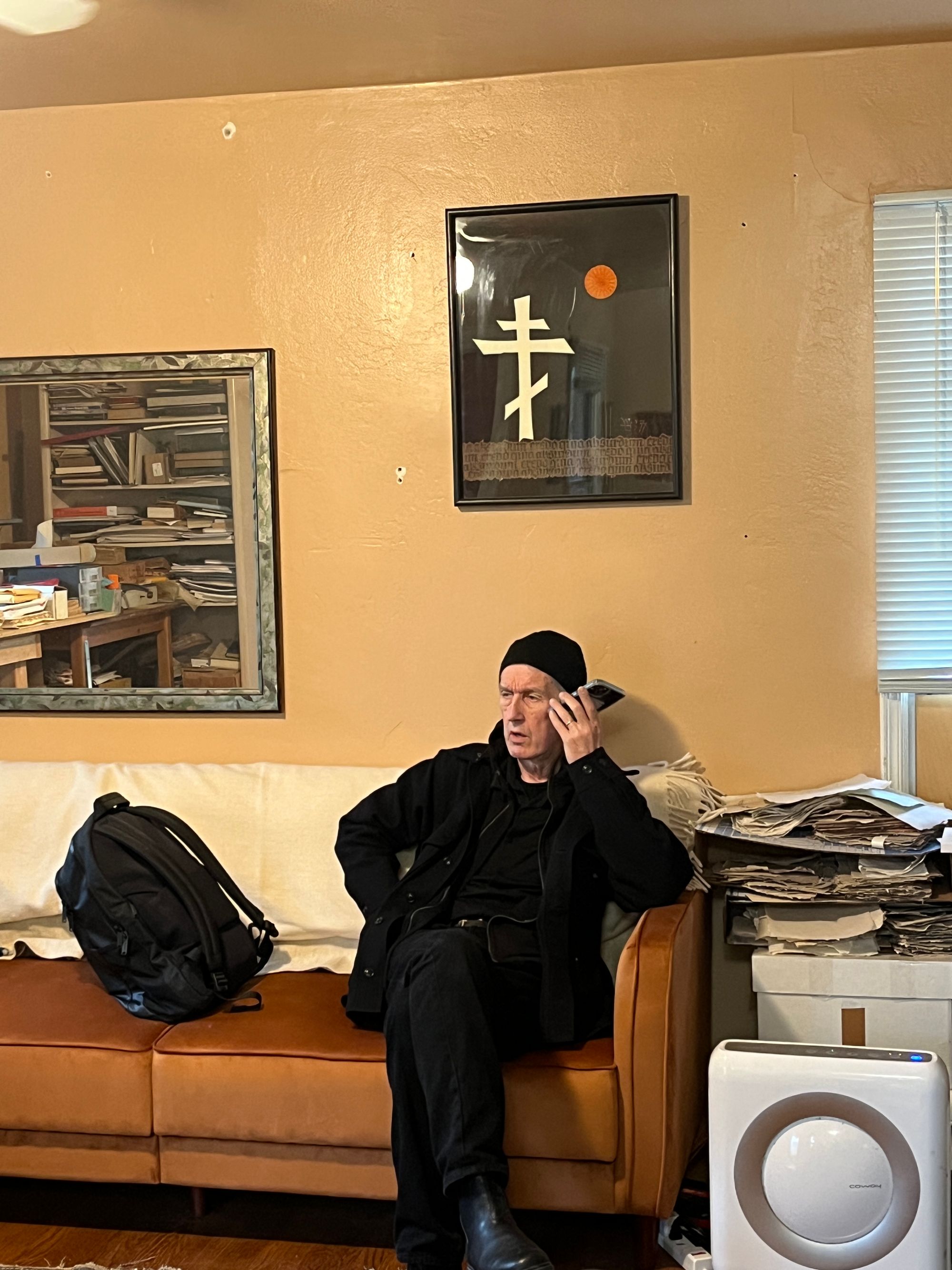
Our plan was to look over the 35 year old printed sheets, come up with a new binding design, and I'd teach him to bind them in this style. While we had discussed a concept for it, until we were both together, with the sheets, we weren't set on anything. We wanted to take his beautiful, restrained treatment of this classic American short story, and put it in a binding that would draw the reader in, and maybe have a little fun with the form of the fine press book.
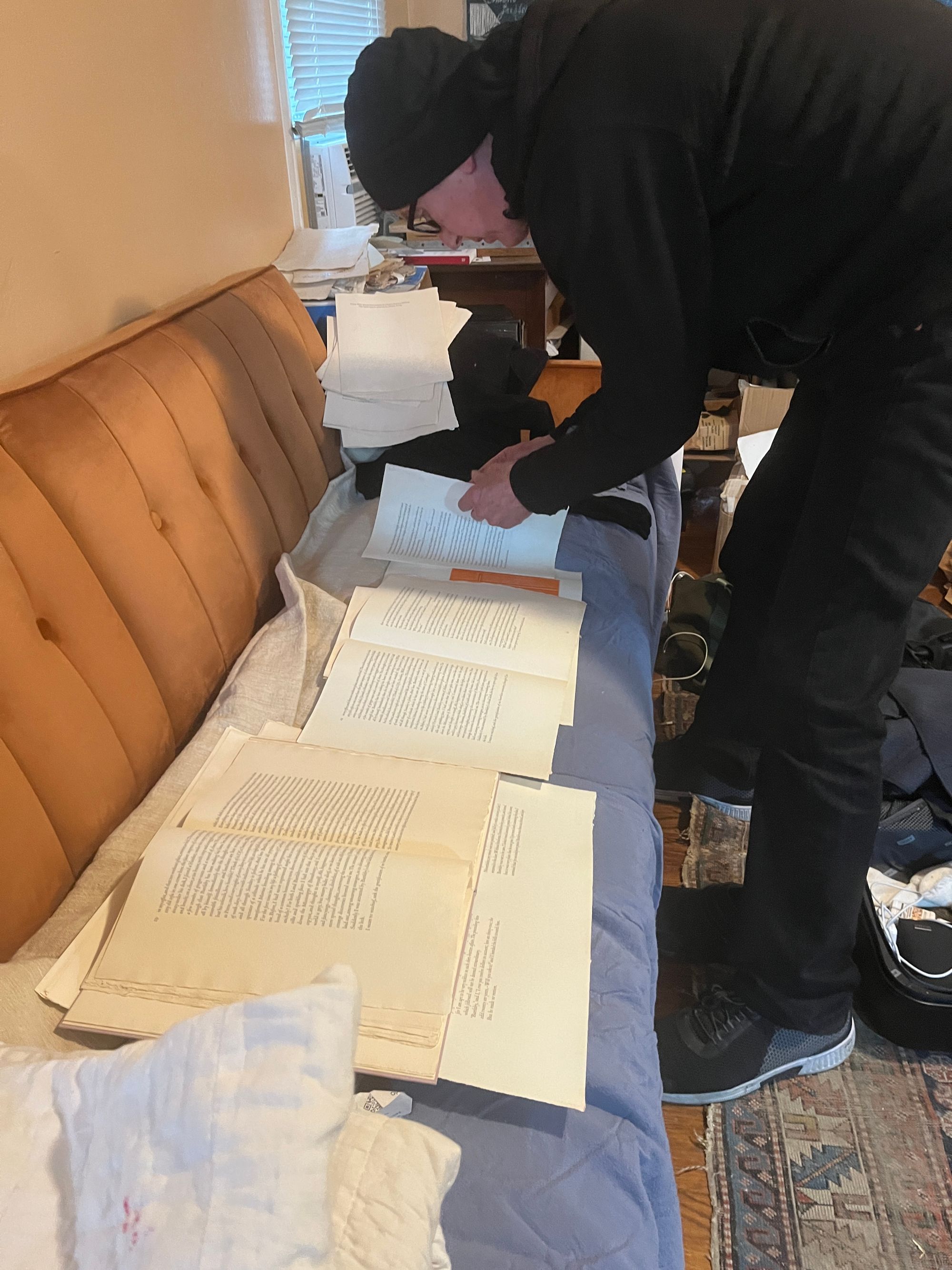
I've long been a fan of bookbinding structures that can be in use for more than 500 years. I prefer to make books that utilize materials that need little or no adornment: raised cords, laced onto wooden boards. This style of binding became all but obsolete by the late 16th century because printed books were made in such quantities that bookbinders had to make time-saving, and cost-cutting decisions that fundamentally changed bookbinding. I've been making wooden-board bindings, studying their structural components, sewing techniques, and mechanical action for nearly 40 years, and have yet to be disappointed by a book bound this way. Of the hundreds of books I have studied closely, and countless others that I've scanned quickly, I learn something new from each one, and want to continue to explore them by making my own.
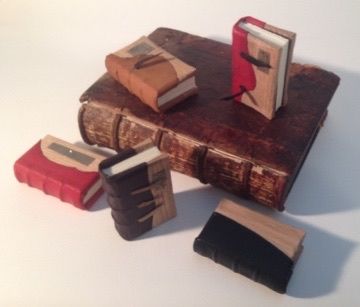
Over the week, we talked about a wooden-board binding that would work for us. Because the Bartleby is a short story, the textblock is made up as a quarto sized book of 8 signatures of 8-pages. A slim volume, but not a wisp of a book as regards subject, nor execution in Earl's hands. Could we come up with a visually impressive binding that might speak of the hard life of a scivener on Wall Street in the 19th century? And, how could we indicate the mercantile environment of the story's setting? We were committed to the wooden-board idea. Now for leather and endsheet decisions. And maybe some metal? We discussed these things throughout the week, and as we talked to others, the ideas developed.
The East Coast and West Coast handpress and book arts community is, in many ways fluid, and well connected with each other's practitioners. However, these worlds are large enough that not everyone knows everyone else. I was happy to introduce Earl to a few of the Bay Area's handpress and letterpress workers.
Earl's first full day here saw us visiting Jennie Hinchcliff and Chad Johnson at the San Francisco Center for the Book in the morning, then we came back to the East Bay where there's a high concentration of talented printers concentrated in North Berkeley.
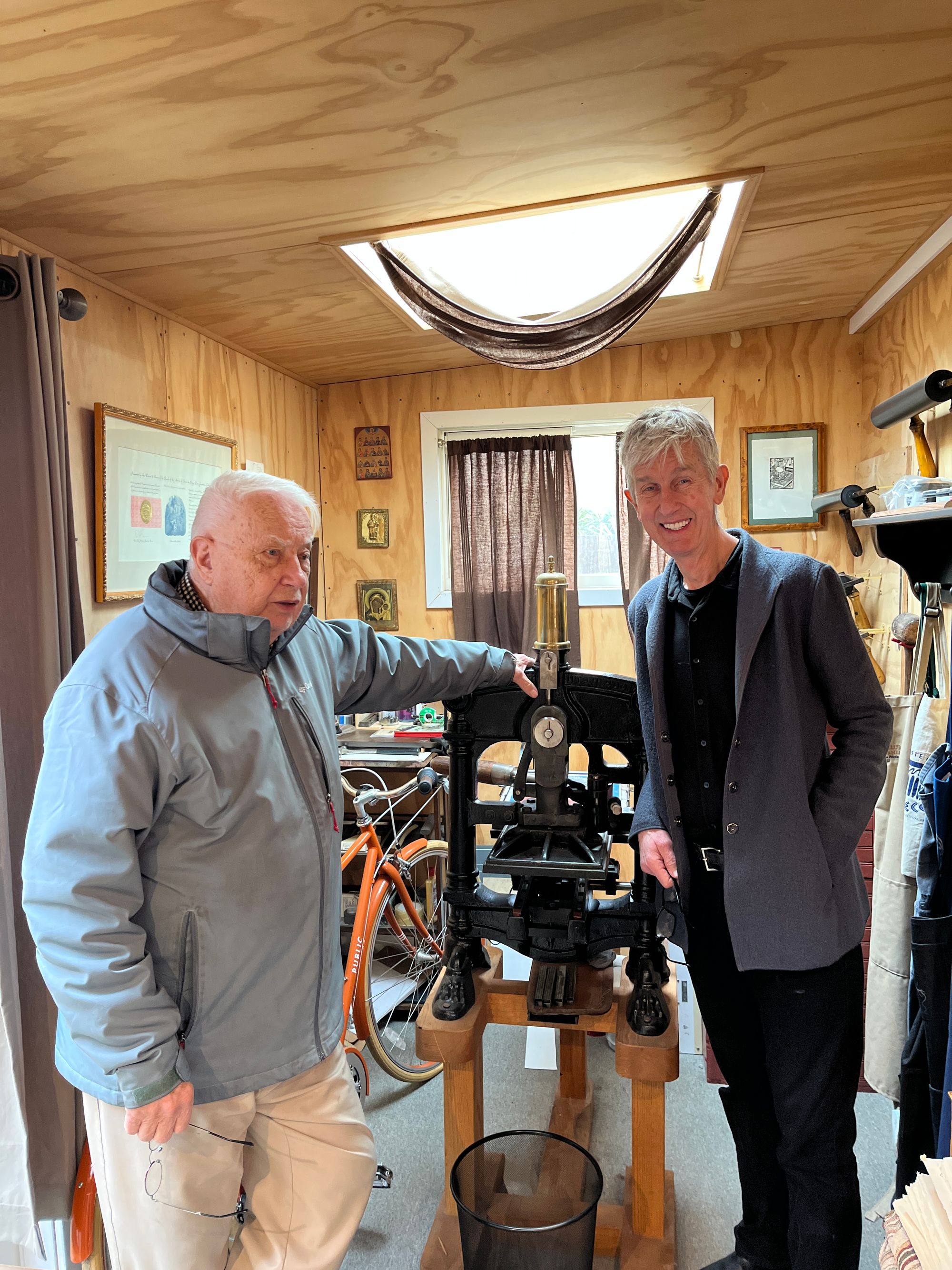
A visit to Norman McNight's Philoxenia Press gave Earl and Norman a chance to talk at length about handset type, hand-inked printing, acquiring equipment, type, and ornaments as they come to one's attention. They hit it off quite well, and I'm sure Earl will be back to see Norman on his next visit.
A couple of blocks away, is Li Jiang's Lemoncheese Press. We got there, checked in with Richard Seibert next door, and headed over to Li's studio for another exceptional meeting. Li's virtuosity in design, creating a new printmaking technique, and executing with such skill, taste, and sensitivity stopped me cold. Earl and I couldn't stop talking about Li's work all week.
I was too enthralled at looking at Li's latest work 36 Views of the Golden Gate Bridge where she has manipulated photopolymer plates to make a direct from drawn image to printed piece, cutting out the intervening layers of photography, digital storage, output, and then printing.
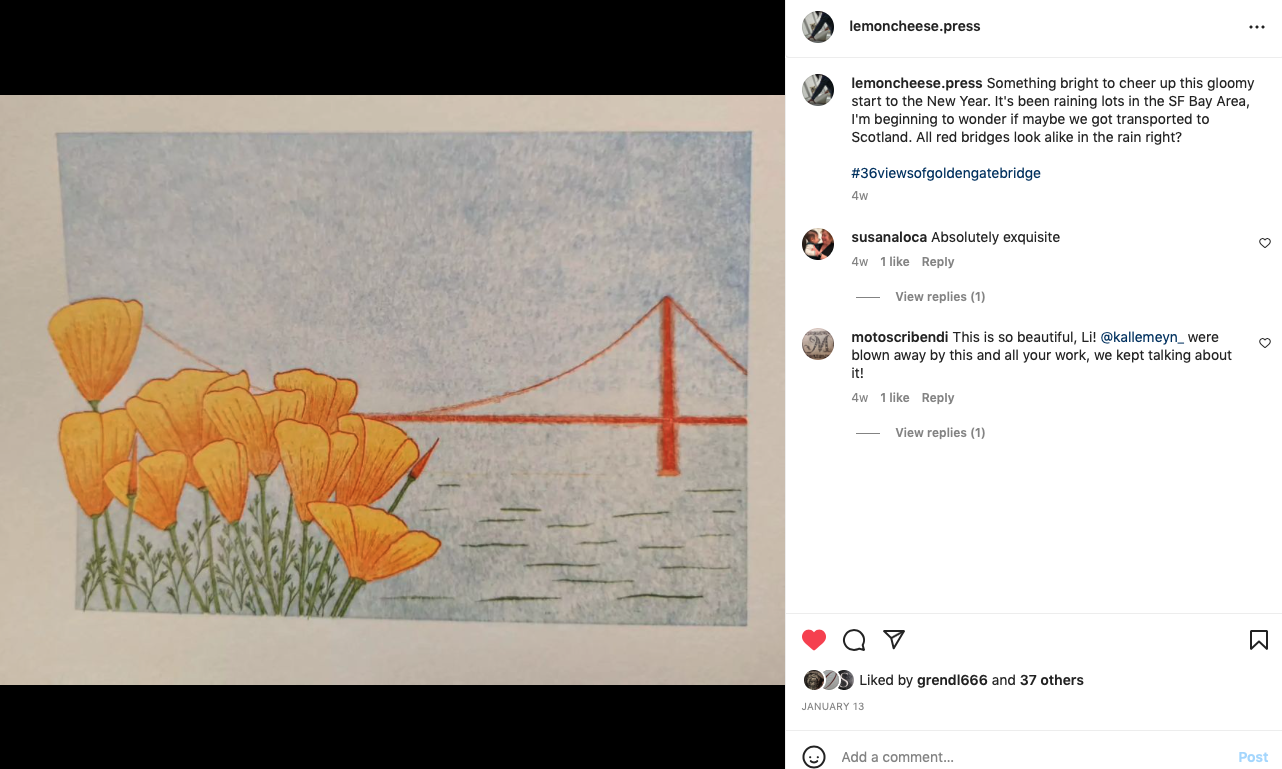
It was getting late in the day, so Li joined us as we went next door. Richard was there, face illuminated by the computer screen glow, and he welcomed us in – and turned on the lights! We stood around the composing stone in his shop, and he and Earl went back and forth, throwing out obscure Tom Waits lyrics, and pitching each other jokes, comments about printing from polymer or lead type, and carrying on – as printers will do.
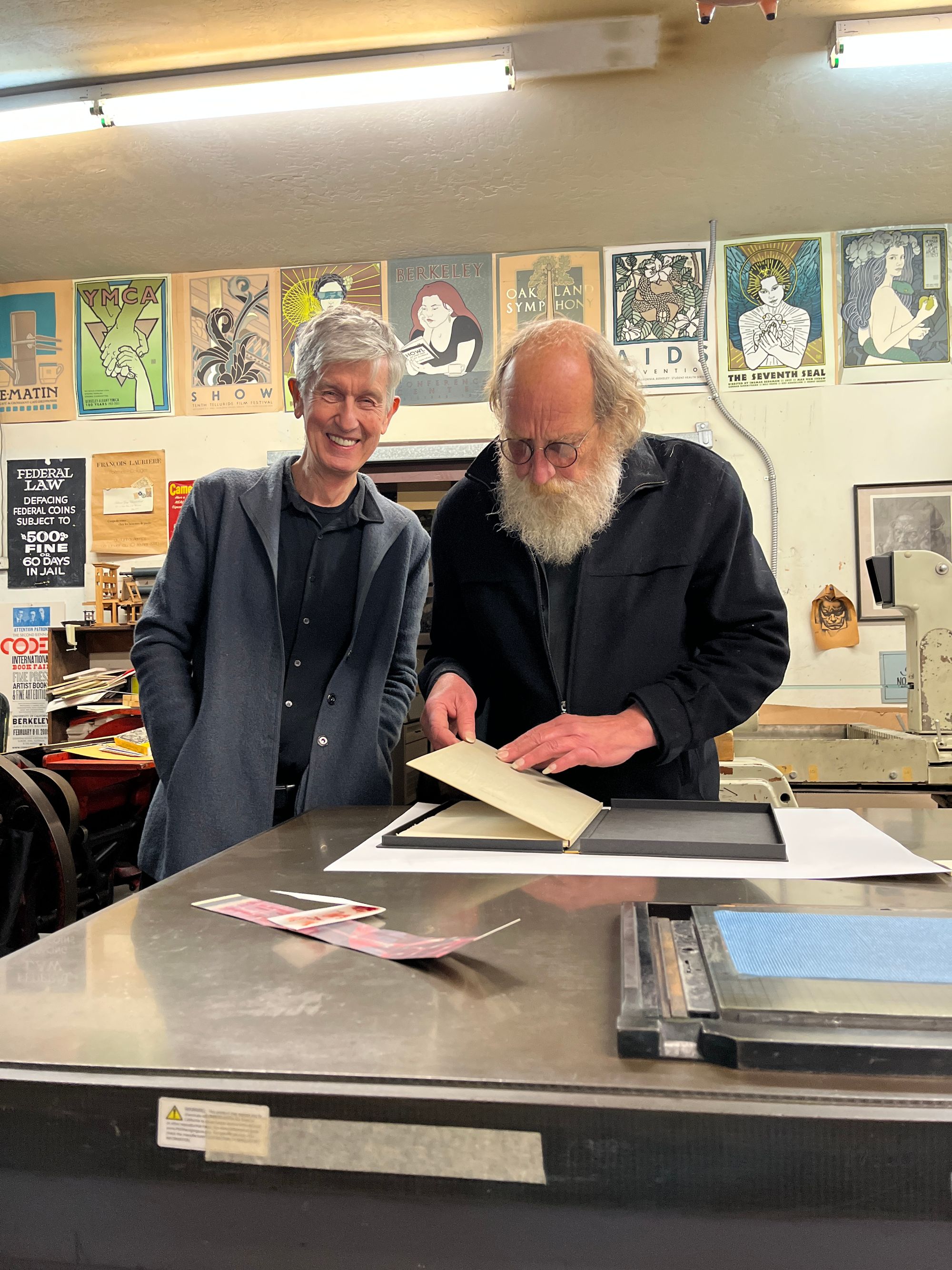
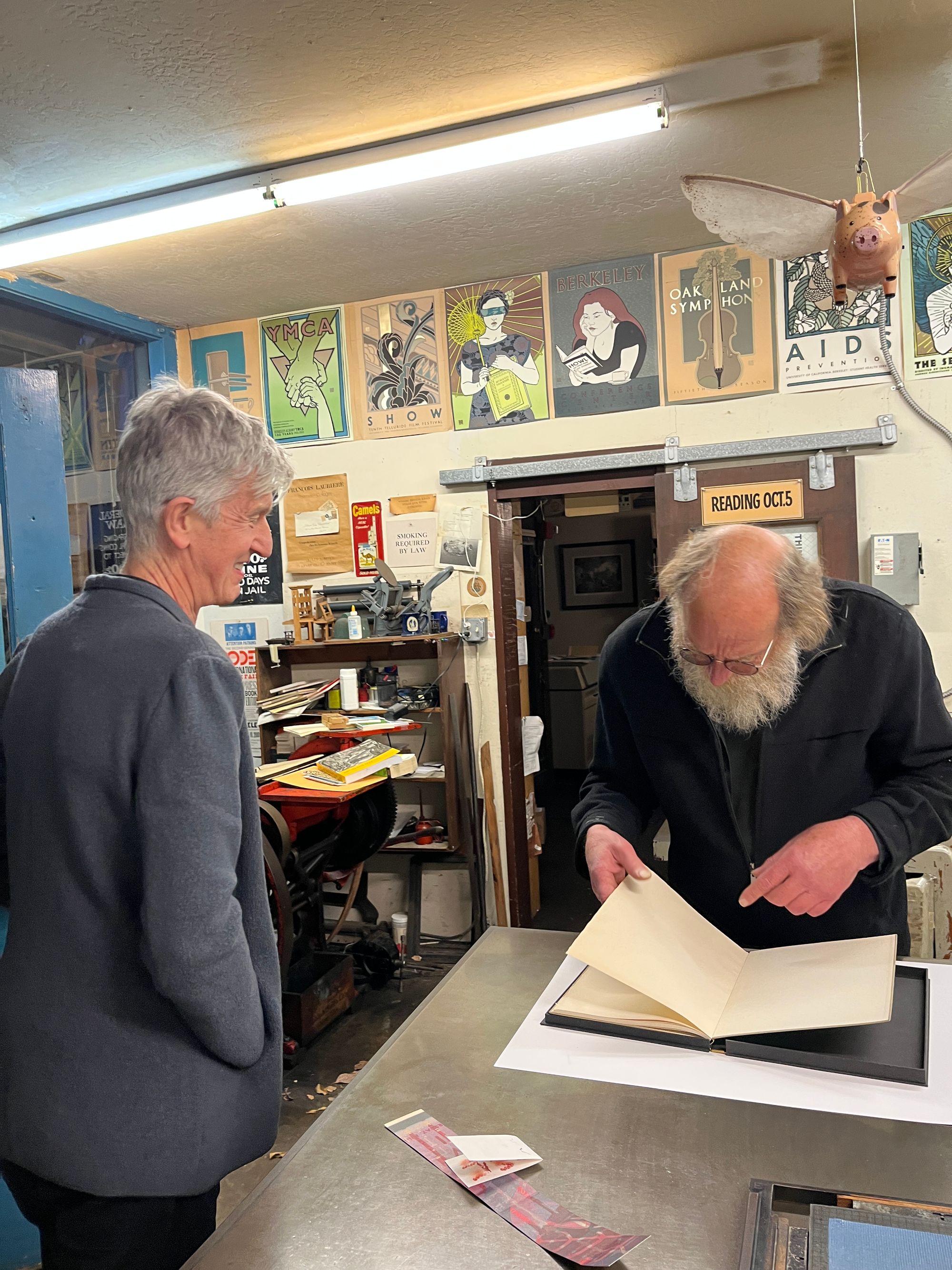
A fairly lengthy discussion about film, photopolymer platemaking, cameras, and passing technologies was peppered with their hard-won opinions, preferences, and maybe peeves, as well.
After this, we drove over to an Indian grocery store on University where Earl gifted me a flat Dosa frying pan, idli cooking dishes, and some Dosa batter ready for cooking! Dinner at JotMahal on Shattuck in North Berkeley rounded out Earl's second day.
In the next post, we'll cover bookbinding instruction, binding design, giving a talk at Mills, and visiting Magnolia Editions!
